Prioritizing automation has become even more important to enable success and organizations that effectively automate business processes follow a few common practices, according to McKinsey & Company.
Findings from the second McKinsey Global Survey conducted just before the COVID-19 pandemic, suggests that more companies are pursuing automation now than two years ago.
“Two-thirds of respondents say their organizations are at least piloting the automation of business processes in one or more business units or functions, compared with 57 percent who said so in the previous survey,” the global consulting firm noted in a recent report.
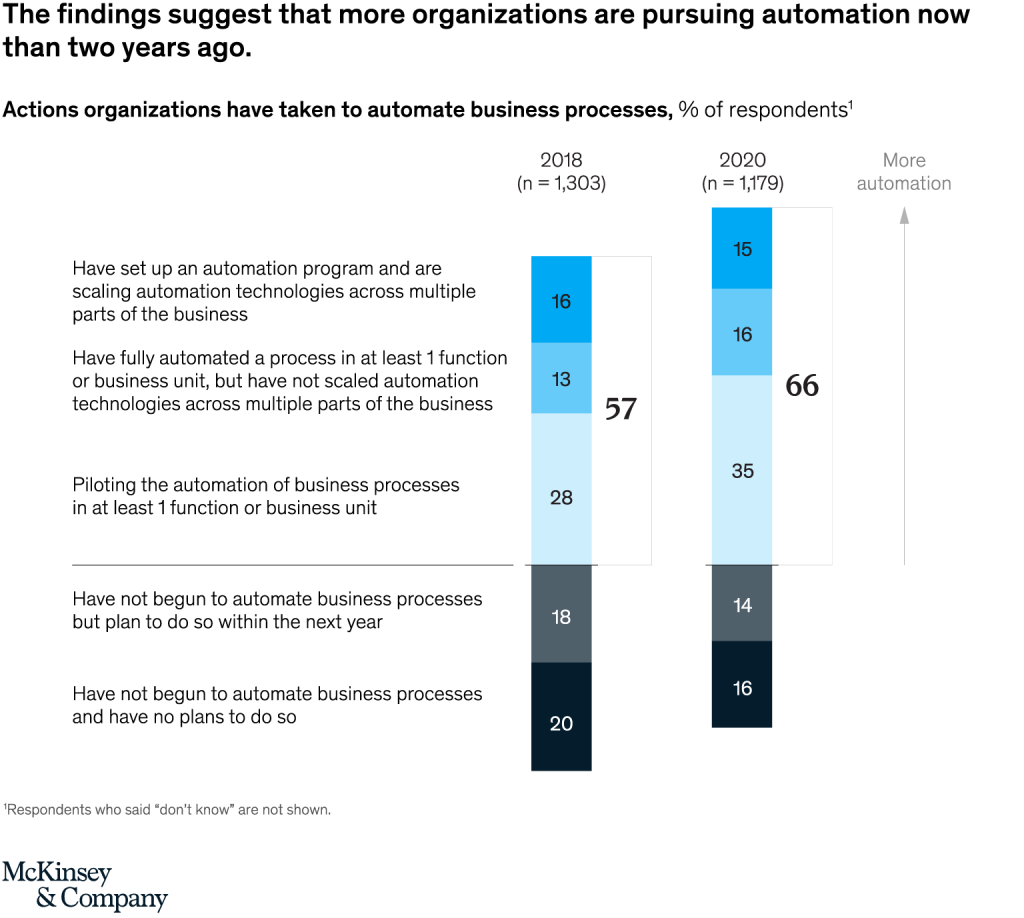
Nearly half of those who report that their organizations have not begun to automate said they plan to take that route within the next year.
According to respondents, the most commonly deployed technologies are business-process-management platforms, robotic process automation, image-recognition technologies, machine-learning algorithms, and automated process-mining, -discovery, and -documentation tools.
The study also found evidence of the adoption of conversation-automation technologies such as voice assistants and chatbots.
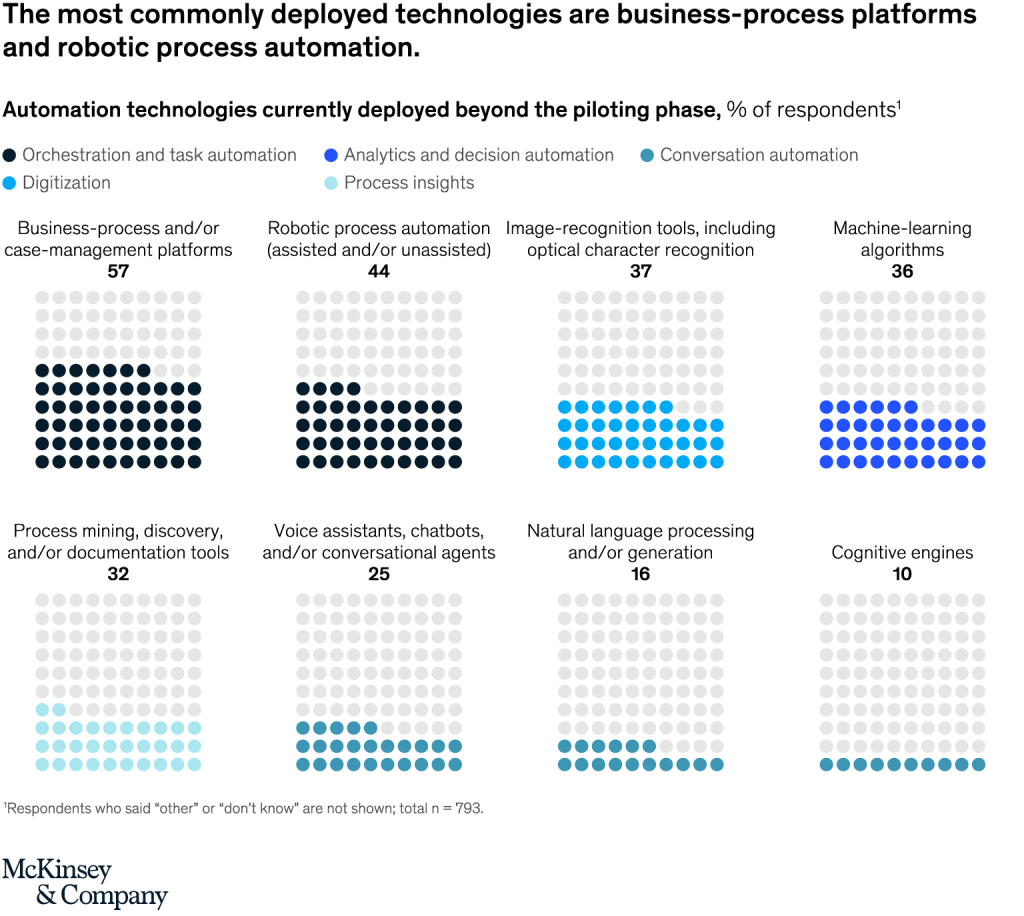
But despite the growing use of automation, McKinsey says there has not been a significant change in the share achieving success over the past two years.
“Just 61 percent of respondents say their companies have met their automation targets,” the firm wrote, adding that this makes it even more crucial to understand the factors that enable success.
Evolving Success Factors
The survey found three distinguishing factors when looking at respondents from larger companies (with $1 billion or more in annual revenues) that are meeting their automation targets.
These include making automation a strategic priority, focusing on people as much as technology, and developing an operating model that enables scaling.
1- Make automation a strategic priority
The 2020 findings reinforce the imperative that organizations with successful automation efforts have designated automation as a strategic priority.
This means they have aligned the automation strategy with the overall business strategy and have placed automation high on the C-suite agenda.
Read more: Automation, Customization Key to Survival of Independent Hotels: Climber CEO
When asked about the primary reasons for pursuing automation, 38 percent of those reporting success said automation was a priority for them during their strategic planning process—nearly four times the share from other companies.
“Among respondents reporting success, 72 percent credit making automation a strategic priority with being one of the most important factors in their companies’ achievements with automation,” the report said.
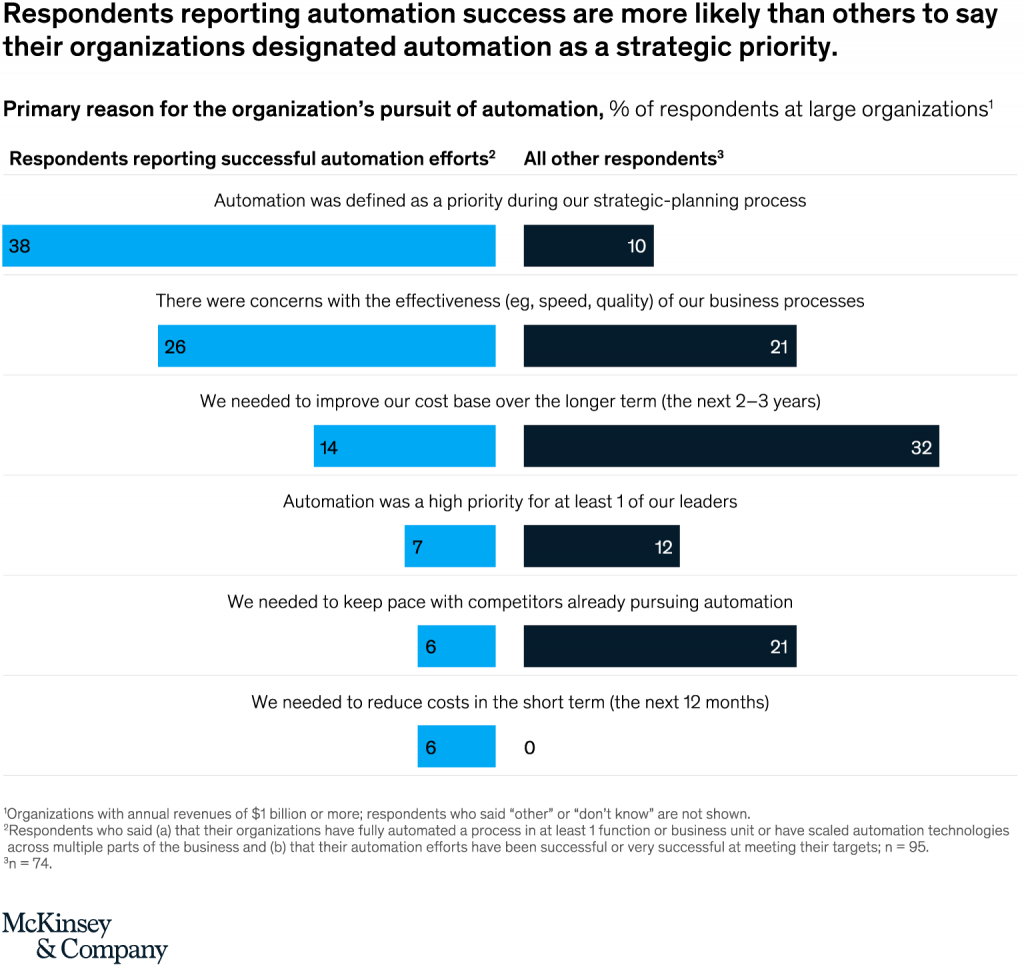
Also, the survey found that successful companies are scaling automation across the organization.
“Respondents from organizations with successful efforts are nearly five times more likely than others to say the scope of their automation efforts covers the entire organization.”
2- Focus on people as much as technology
The previous edition of the survey carried out in 2018 showed that organizations with successful automation efforts were concentrated on talent acquisition and skill gaps.
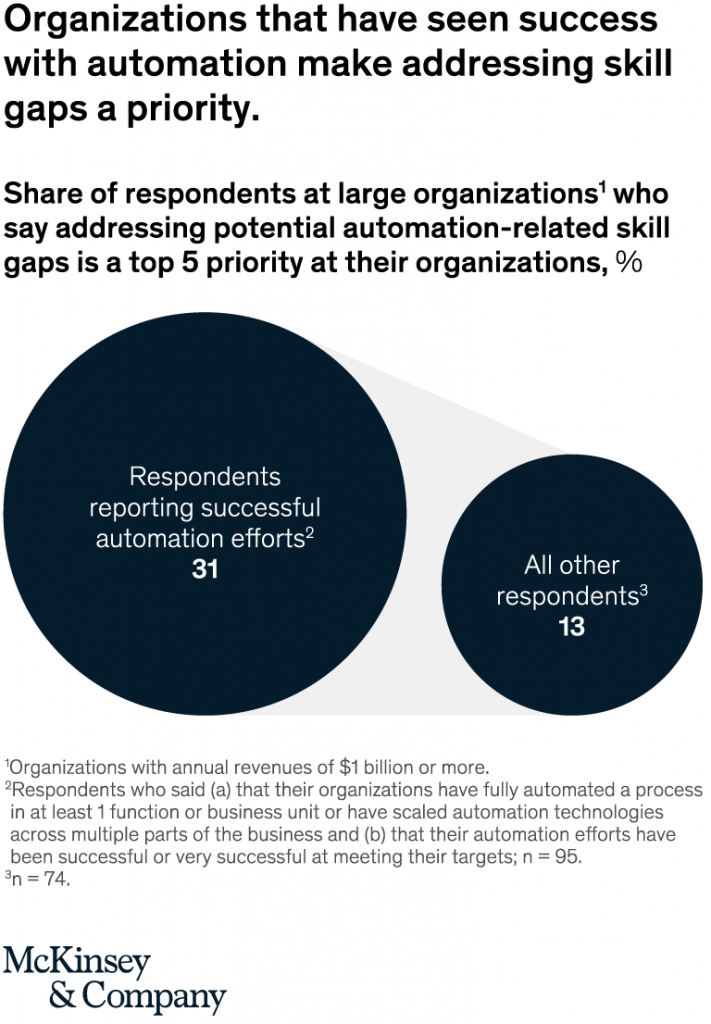
This year’s research found that successful organizations now consider the human elements of these efforts in three ways.
“First, they consider and build the automation-related capabilities of their personnel. Respondents from these organizations are more likely than others to say their organizations make addressing potential automation-related skill gaps a top-five priority,” McKinsey’s report said.
These respondents are more than twice as likely as others to cite employee training and capability building as one of the main reasons for their organization’s automation success.
Read more: How to Keep an Edge in the Era of Pervasive AI?
The second practice by successful organizations is to gather individuals’ expertise and incorporate them into the design of automation solutions.
“Respondents reporting success are much more likely than others to say their companies scale up their automation programs by using ‘human in the loop’ solutions—that is, training automation platforms with people’s input over time,” the report reads.
Finally, successful organizations prioritize communication across the organization during the implementation of automation-related changes, the consulting firm says.
“Respondents from companies with successful efforts are seven times more likely than others to say they formally involve the communications function while implementing automation efforts, and they are more than twice as likely to say the HR function is involved.”
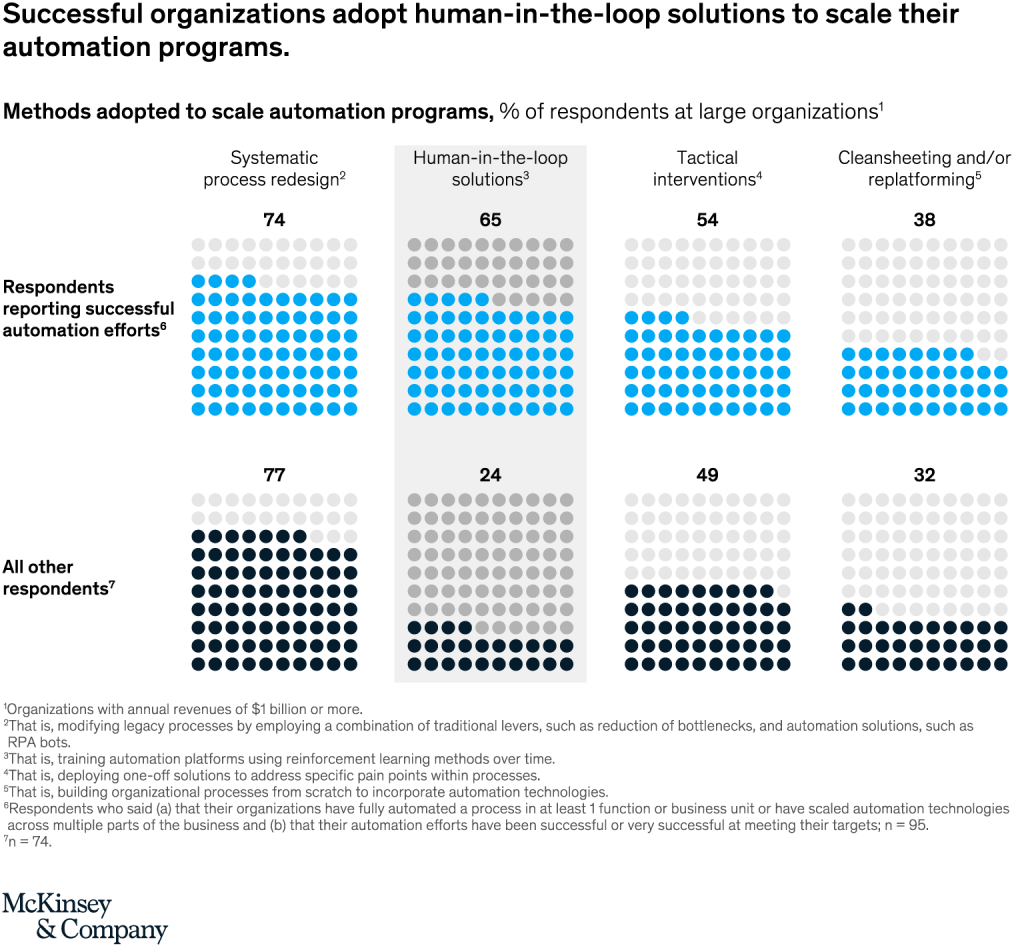
3- Develop an operating model that enables scaling
The responses show that large companies have automated at least one business process in an average of four functions, such as finance, IT, and customer service.
McKinsey’s analysts believe that silos within the organization can impede performance if business areas do not coordinate closely with one another in the automation process.
“The findings suggest that successful companies’ operating models—their structures for coordinating activities across the organization—allow their automation programs to properly manage the complexity of deploying automation technologies, which makes it easier for those programs to scale,” they say.
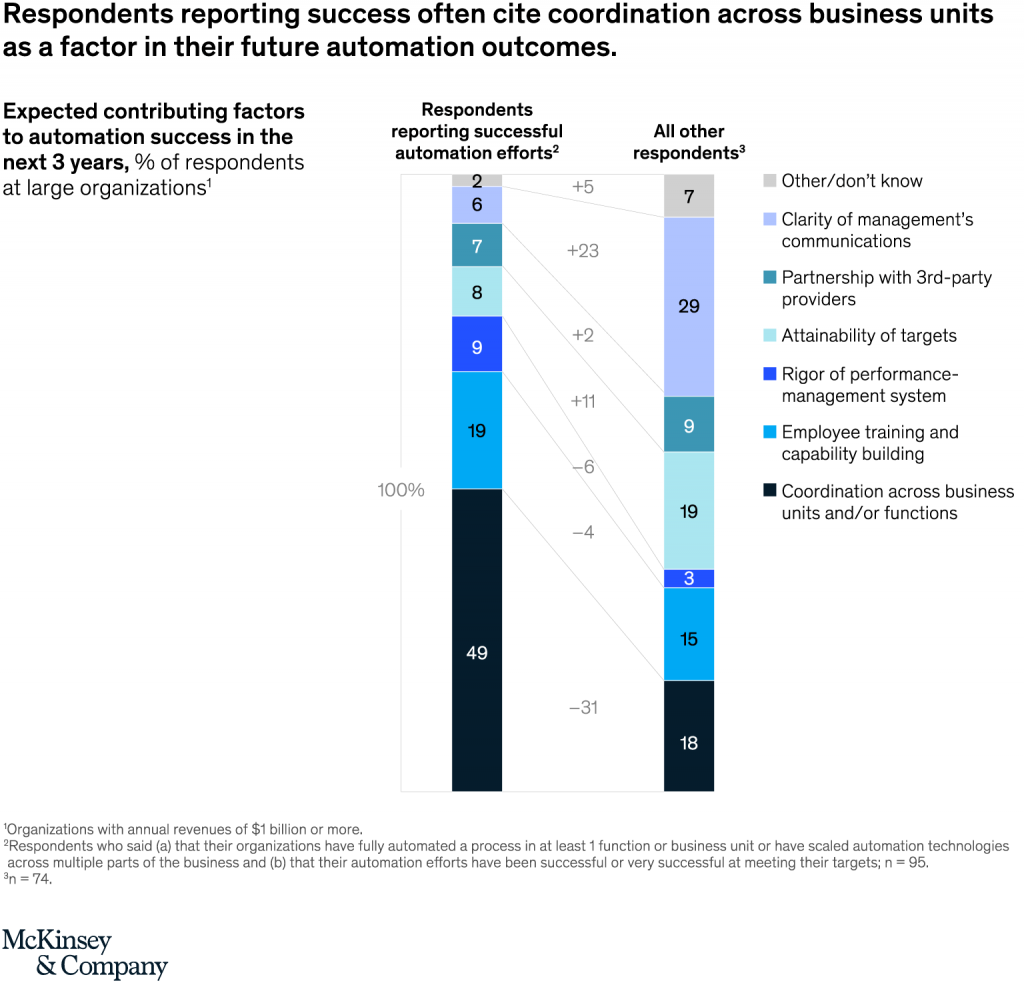
As operating models become more complex, the findings of the survey suggest leaders should have a full view of the costs of automation programs that may be implemented across the organization.
“Forty-six percent of respondents who report automation success at larger companies say their leaders understand very well or completely the total cost of ownership for their automation efforts. Just 10 percent of respondents at other companies say the same,” the report said.
Smaller Companies
The second McKinsey Global Survey indicates that smaller companies are less likely than large companies to have automated any of their processes. However, those that have done so are seeing a higher success rate than larger organizations.
“Sixty-five percent of respondents at smaller companies report success with automation, compared with 55 percent at large organizations.”
In addition to the factors seen among successful large organizations, another element seems to be a marker of success for smaller enterprises—taking a tactical approach and setting tangible objectives for automation initiatives.
“Fifty-five percent of respondents at successful smaller companies say their organizations have established key performance indicators to track the impact of automation efforts, compared with 37 percent of respondents at other smaller companies,” McKinsey wrote.
The firm says the three imperatives for successful automation should be looked at as parts of the same automation mandate rather than separately.

